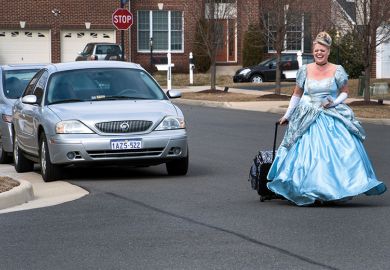Australia’s government has made vocational training a centrepiece of its efforts to reboot the post-pandemic economy, without committing any extra funding for either vocational or higher education.
The government’s “JobMaker agenda”, heralded by prime minister Scott Morrison during a Canberra speech on 26 May, aims to exploit a rare cooperative spirit between frequently warring interest groups to “win the battle for jobs”.
A major plank of the plan involves enacting unrealised skills reforms recommended in a 2019 report by Steven Joyce, a former New Zealand tertiary education minister. They include more consistency in the funding of courses across Australia, faster curriculum redesign, better labour market intelligence and a decluttering of the “bewildering” array of courses.
Mr Morrison’s focus on vocational education appears to have extinguished any lingering hopes for a federal bailout for the university sector. He raised doubts over universities’ claims that they faced multibillion-dollar losses because of the pandemic’s impact on international education.
“Sure, we’ll be working with the higher education sector, but I note 80 per cent of international students that come to Australia are here,” he said. “They are here. The way it’s talked about you’d think that they weren’t, but about 80 per cent are here.”
Universities remain ineligible for JobKeeper, the federal government’s massive employment subsidy programme, despite revelations that the scheme is now expected to consume only slightly over half of the A$130 billion (£70 billion) initially forecasted.
Australia’s four private universities appear to have benefited from the government’s unexpected A$60 billion reprieve, after they were exempted from a requirement to demonstrate significant revenue losses over the first half of 2020 to qualify for JobKeeper subsidies. Like commercial businesses, they now only have to show losses over a single calendar month.
However, the 37 public universities remain bound by the six-month rule, ensuring that none will receive JobKeeper and raising the odds that the sector could lose as many as 30,000 jobs, as the academic union has warned.
Victoria’s Deakin University proposes to terminate 300 existing employees as part of what it calls a “phased approach to staff reductions”. Other universities have also flagged forced redundancies of tenured staff following widespread layoffs of casuals and fixed-term contractors.
Mr Morrison gave some indications that the government valued universities’ contribution to the broader economy. He highlighted “world-leading” scientists and researchers among the country’s key strengths, alongside its mineral resources, agriculture and stable financial system.
But he outlined a skills focus to ensure that Australians were “better trained for the jobs businesses are looking to create”, saying the government would pursue Mr Joyce’s recommended overhaul of a system that was “clunky and unresponsive to students’ demands” and “marred” by funding inconsistencies.
The prime minister said students faced an “overwhelming” choice of almost 17,000 subjects, with government subsidies more than twice as high in some states as others, and lingering questions over course quality and employment outcomes.
Businesses will be given more say in helping shape courses, he said. A pilot project in human services has already allowed for expedited training of aged and disability carers during the Covid-19 pandemic.
A newly created National Skills Commission will also undertake detailed labour market analyses, helping to “flag emerging…labour market trends” and giving students “comprehensive data on where skills gaps and jobs are”. This information will help drive funding decisions including course subsidies, Mr Morrison said.
But asked whether Canberra would provide additional money to pay for all this, after analyses from Victoria University’s Mitchell Institute highlighted dramatic falls in overall skills funding, he said the answer was not to “invest money in a dud system” but to ensure it was “more focused on what it’s actually supposed to do”.
“I’m…committed to investing more in a better system, if we can achieve a better system,” he said, adding that the states – unlike the federal government – were not legally obliged “to spend an indexed amount every year on skills. So the commonwealth spending money doesn’t mean the states will.”
Vocational education analyst Claire Field said it made sense for the government to pursue unfinished business from the Joyce review. While some recommendations had already been implemented in the 2019 federal budget, others needed approval of the states and territories.
Ms Field said giving the National Skills Commission a role in encouraging more consistent funding arrangements, in particular, would boost the training sector’s capacity to foster economic recovery. But more funding was also needed from all levels of government, she argued.
Register to continue
Why register?
- Registration is free and only takes a moment
- Once registered, you can read 3 articles a month
- Sign up for our newsletter
Subscribe
Or subscribe for unlimited access to:
- Unlimited access to news, views, insights & reviews
- Digital editions
- Digital access to THE’s university and college rankings analysis
Already registered or a current subscriber?








